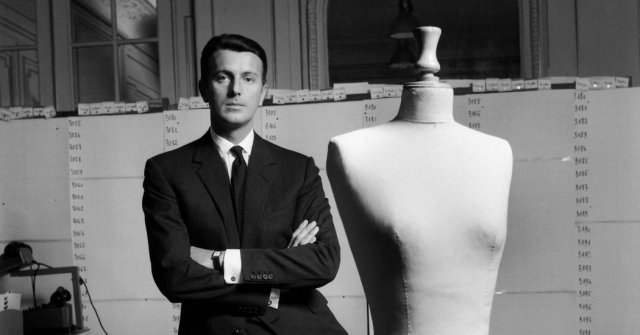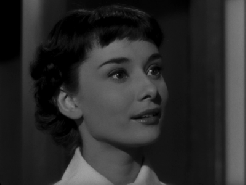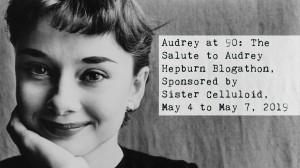
It began on Roman Holiday. Audrey Hepburn was new to film and Edith Head was the de facto queen of costumes. She was not, as some would mistakingly call her, a fashion designer; Edith Head was a costumer. She made wardrobes that looked right on the big screen – that were framed right, shot right, lit right.

Head’s dissatisfaction with Audrey Hepburn’s physique was immediate. She thought the starlet too gangly. That her shoulders were too narrow, neck too long, arms frail, legs knock-kneed, waist obscenely slim, teeth too big. She believed in the post-WWII return to sensual allure. It was the hourglass figure, ample bosoms, and provocative skin of Dior’s New Look that Head honed onscreen. Grace Kelly was Head’s idea of the nonpareil. In the costumes of Roman Holiday, all these “imperfections” were covered by jewels, scarves, and long skirts. Her costumes weren’t meant to be fashionable or trendy, they were meant to be timeless – timeless in an unremarkably un-couture way.
On Sabrina, director Billy Wilder decided that Sabrina Fairchild needed a true Parisian designer if her transformation was to seem realistic.
So Audrey was sent to Paris for a little shopping excursion. With some strict notes from the studio, Audrey was to pick out clean choices from Cristóbal Balenciaga and bring them back to Head, who would change the material and alter the design enough to feel original and unique. Yet, Balenciaga was much too busy with his summer collection, so a call instead was made to one of Balenciaga’s students, a twenty-six year-old designer with the eyes of his master and more time to kill.

Hubert de Givenchy was the quintessential fashion designer. A tall, striking matinee-idol of a man, he believed fashion should conform to the shape and personality of the wearer. He dispelled with Louis Sullivan’s motto that form follows function. For Givenchy, if it looked good, it looked good. He loved the look and touch of fabric, and when he was informed “Mademoiselle Hepburn” requested to meet him, he was beyond ecstatic.
Hubert expected Katharine Hepburn.
No, Mademoiselle, I can’t dress you.
— Hubert on first meeting Audrey

A 5’7, gangly, pixie-haired ballerina perked up at their introduction. Hubert immediately turned her away, but after insurmountable pleading, he relented to humoring the girl and gave her access to sift through his collection. Everything she chose contrasted with the expectations set upon her during Roman Holiday. Audrey adored black minimalism, she wanted to show off her slender neck and collarbones, her gown lengthened her legs, and wrapped snugly around her waist.
That night at dinner, Hubert fell in love with the idea of Audrey Hepburn.
The following year, Edith Head may have won the Academy Award for Sabrina, but Audrey had won the title of style icon. There in Paris, she experienced a real-life Sabrina Fairchild moment and a lifelong friendship was born.
This girl, singlehandedly, may make bosoms a thing of the past.
— Billy Wilder
After her superstardom, Audrey had a clause in her contract that Givenchy design all her costumes. This went over well in 1957’s Funny Face and Love in the Afternoon, two pictures that shot on-location in Paris, and allowed Audrey to flaunt Givenchy’s fashionable Parisian couture. By the time Breakfast at Tiffany’s rolled along, however, Edith Head was not pleased. Tiffany’s was a New York film and having a Parisian designer clothes for New Yorkers made no sense.

The complaints made no difference. By the ’60s, Audrey was Givenchy and vice-versa.
Hubert chose black for a reason. An elegant young girl stepping out of a taxicab onto Fifth Avenue at five in the morning in a backless evening dress needed unusual subtext. For women, black was the color of widowhood, but beyond that, widowhood was a sign of sexual experience. In that sense, black became the color of the Roaring Twenties. It was stark, mysterious, and an expensive dye. WWII brought an end to extravagance, and multi-color once again became the norm. In 1961, Hubert may have singlehandedly changed that. Wholesome Audrey steps onto Fifth Avenue with the color of sexual experience, mystery, and flapper energy. Thus, the little black dress was born.

It wasn’t just elegance that birthed the little black dress, it was Givenchy’s eye for simplicity as a fashion statement. It looked almost casual in its design – not like the flowing gowns that wore so many stars of the ’50s. It was a dress that could be acquired by gangly girls from Tulip, Texas and transform them into couture that belied their profession. The LBD was quiet, meant for groggy mornings in stoic, dignified places. That was the ethos of Tiffany’s, and in so many ways, the ethos of Holly, determined to stay afloat despite the waves of emotional toil that may come.
Givenchy’s clothes are the only ones I feel myself in. He is more than a designer, he is a creator of personality.
— Audrey Hepburn

They remained friends their entire lives. Their personal relationship was equal to their working relationship. Hubert designed Audrey’s wedding dress for her second marriage and carried her gamine qualities into nouveau idealism. When Audrey passed away in 1993, Hubert wept in the navy blue coat she once gave him with the instruction, “when you are sad, wear this and it will give you courage”. She was his muse and he was her whisperer. Together, Audrey and Hubert invented a new brand of timelessness that remains relevant even today. They treated clothing with the precision and care that fragility requires and brought minimalism to the mainstream.
She was an enchantress, inspiring love and beauty, and fairies never quite disappear altogether.
—Hubert Givenchy

This piece is included in Audrey at 90: The Salute to Audrey Hepburn Blogathon, sponsored by Sister Celluloid. To see the rest of the posts, just click here.
🌎
In recognition of Audrey Hepburn’s devotion to humanitarianism, please consider a donation to UNICEF in her memory.

Thank you so much for joining the blogathon — I love, love, love this story!! Audrey and Hubert were indeed kindred spirits, and honestly had more style and elegance than Edith Head could imagine on her best day. 🙂
LikeLiked by 1 person
Audrey and Hubert had a connection that bonded them for life! Edith Head may have been a great costumer, but Givenchy’s Audrey certainly transcended clothes into something so much more spiritual. Thank you for letting me participate!
LikeLike
Lovely.
I learned so much from your article and was very moved.
LikeLiked by 1 person
Thank you so much, Patricia! Learning about Audrey and Hubert moved me as well.
LikeLike
Well done on penning a beautiful tribute to both Audrey and Hubert. 🙂
I’m so glad that she was able to put that clause in her contract because she looked magnificent in his clothes. One would never guess that Holly’s wardrobe in ‘Breakfast at Tiffany’s’ was designed by someone “noticeably” foreign as Edith Head would have it. Sometimes a match was made between designer and star which seemed to be written in the stars!
LikeLiked by 1 person
Edith Head’s costumes were made for movies, but Givenchy’s clothes were made for all time. As a European, Audrey must’ve known this. Thanks for reading!
LikeLiked by 1 person
What a great, informative and interesting article Victor! I love reading anything that has something to do with Audrey Hepburn and fashion. Her collaborations with Givenchy are so iconic. And, I have to say, black was a colour that fits Audrey perfectly.
LikeLiked by 1 person
Thank you, Ginny! Audrey loved black more than any other color. She even had a rare diva moment when Stanley Donen ordered her to wear white socks during the “Funny Face” bohemian dance number and she insisted on black. But she was quick to apologize and make up when she realized how much the white made the black stand out 🙂
LikeLiked by 1 person
What a fascinating post! I learned some new things today thank you. I recently finished a biography on Audrey for the blogathon, Did you know that Givenchy actually created a perfume just for Audrey? He named it l’Interdit. Audrey always insisted on purchasing it, instead of allowing him to gift it to her.
LikeLiked by 1 person
I didn’t know that! I’d love to get a sample of it and see what it smells like. Thank you for reading!
LikeLike
What a lovely tribute to such an iconic team. I always have to remind myself how odd Audrey’s look was deemed when she first came to Hollywood — she was so unlike the Sophia Lorens and Marilyn Monroes of the time, and yet nowadays her look is so timeless and revered. It feels like she and Givenchy were destined to meet, and their friendship was such a beautiful thing.
I love Edith Head, but a part of me has never forgiven her for when she took sole credit for Sabrina and didn’t even mention Givenchy when accepting the Oscar for it.
LikeLiked by 1 person
It makes you wonder how much of fashion is cyclical, and what kind is just a fad. Givenchy really weaponized minimalism as a timeless aesthetic. I personally don’t think he could’ve done it with any star other than Audrey!
LikeLiked by 1 person
Pingback: Audrey at 90: The Salute to Audrey Hepburn Blogathon Has Arrived! | Sister Celluloid